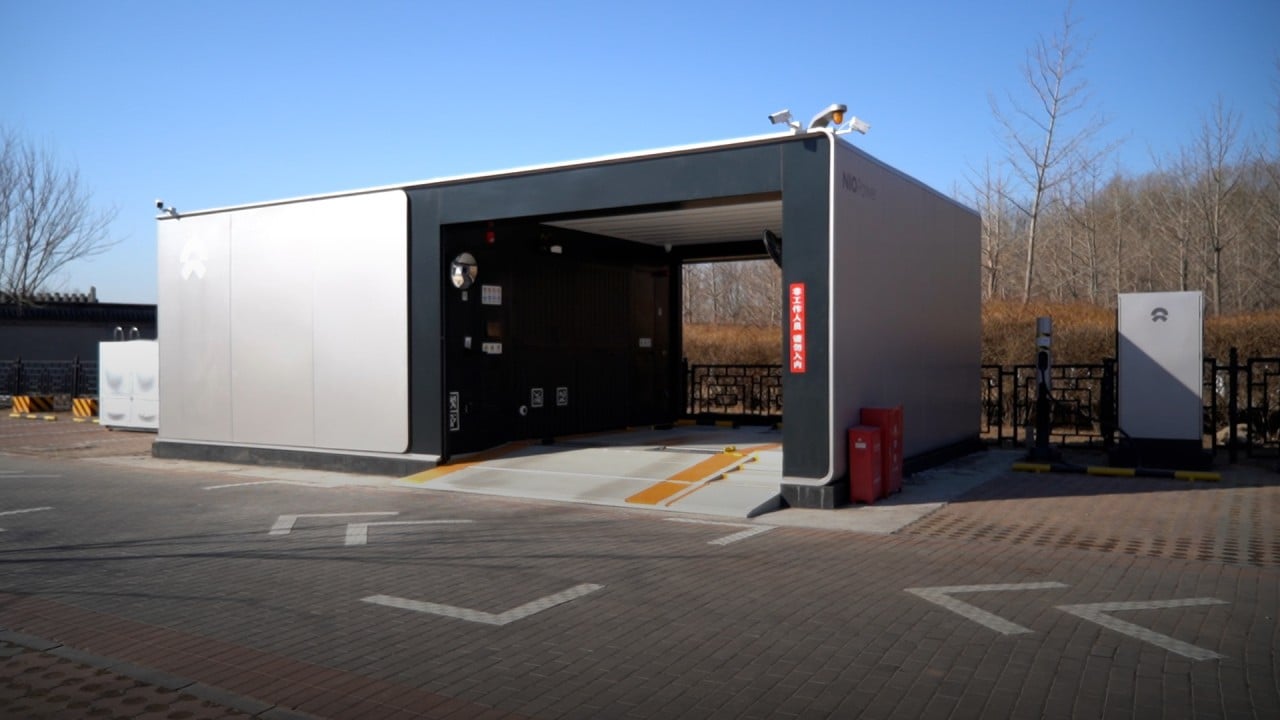
Chinese NEV makers need to offer better value proposition to buyers as price war ‘unsustainable in the long-term’, says Fitch
- Market penetration rate of NEVs in China is expected to reach 35 per cent this year and 50 per cent around 2025, Fitch analyst Yang Jing says
- The price war among carmakers is also affecting battery makers, who are facing pricing and cost pressure
Lower battery costs could push down NEV prices in China in the second half of the year, accelerating the replacement of traditional internal combustion engine vehicles, they added.
“The market penetration rate of NEVs in China is expected to reach 35 per cent this year and 50 per cent around 2025,” Yang Jing, the director of Asia-Pacific corporate research, said on Thursday during the firm’s first in-person press conference in Beijing this year.
The penetration rate of NEVs jumped from 15 per cent to 28 per cent between 2021 and 2022.
The average Chinese car buyer was less likely to consider whether the car was powered by electricity or petrol, but instead look at a car’s functions and user experience for the price they can afford, which NEVs offer, she added.
China’s car market has seen a bruising price war since October last year, when Tesla cut prices of its Shanghai-made Model 3 and Model Y cars. The US carmaker followed it with another cut in early January and was soon joined by a host of carmakers from BYD to SAIC and Guangzhou Automobile as inventories started to pile up.
Could price war in Chinacars sector be over after May sales rise?
The outlook is improving, with carmakers reporting a near 50 per cent jump in sales in the first week of May, which could lead companies to stop offering discounts, according to a report from the China Passenger Car Association.
“Buyers are still considering the price and the convenience to charge,” Yang said. “In the short-term, plug-in hybrids and extended-range hybrids could be the main driving force for the further penetration of NEVs.”
China is the world’s largest NEV market, accounting for 60 per cent of sales last year.
Yang said that the recent price cuts were triggered by a short-term mismatch of supply and demand and that it was “unsustainable in the long term”, as leading players expanded production last year and buyers waited for prices to drop further, weakening demand. The price war was a short-term strategy for carmakers to destock and compete for market share.
“In the long-term, competition in the NEV sector will come from areas such as vehicle intelligence, sales and service network expansion and infrastructure, which all require long-term capital input,” she said.
“Only companies with stable profits and a strong financial position can stay competitive.”
The price war among carmakers has also affected battery makers, said Chen Li, director of Asia-Pacific corporate ratings at Fitch. Batteries make up 40 per cent of the cost of an NEV.
“They are facing pricing and cost pressure, which will be a bigger challenge this year for the industry chain,” Chen said.
Cars will need to be of better value. While NEVs outperform traditional cars in comfort and functionality, Yang said key technologies such as fast charging and higher-level automated driving systems were yet to see wider application due to capital and regulatory restrictions.
Meanwhile, Chinese NEVs continue to have a price advantage in overseas markets.
During the first four months of 2023, car exports grew 110 per cent year on year, according to Fitch. In Europe, 16 per cent of NEVs sold last year were manufactured in China.
“We expect international carmakers will leverage the cost advantage of China’s NEV industry to manufacture cars for exports,” Yang said.
Chinese carmakers will need time to build their presence in developed markets, she said, adding that they have an advantage in emerging markets.
“Economical Chinese NEVs will have a very good chance in these [emerging] markets, as global carmakers will find it difficult to develop low- and mid-range products in the short-term.”



